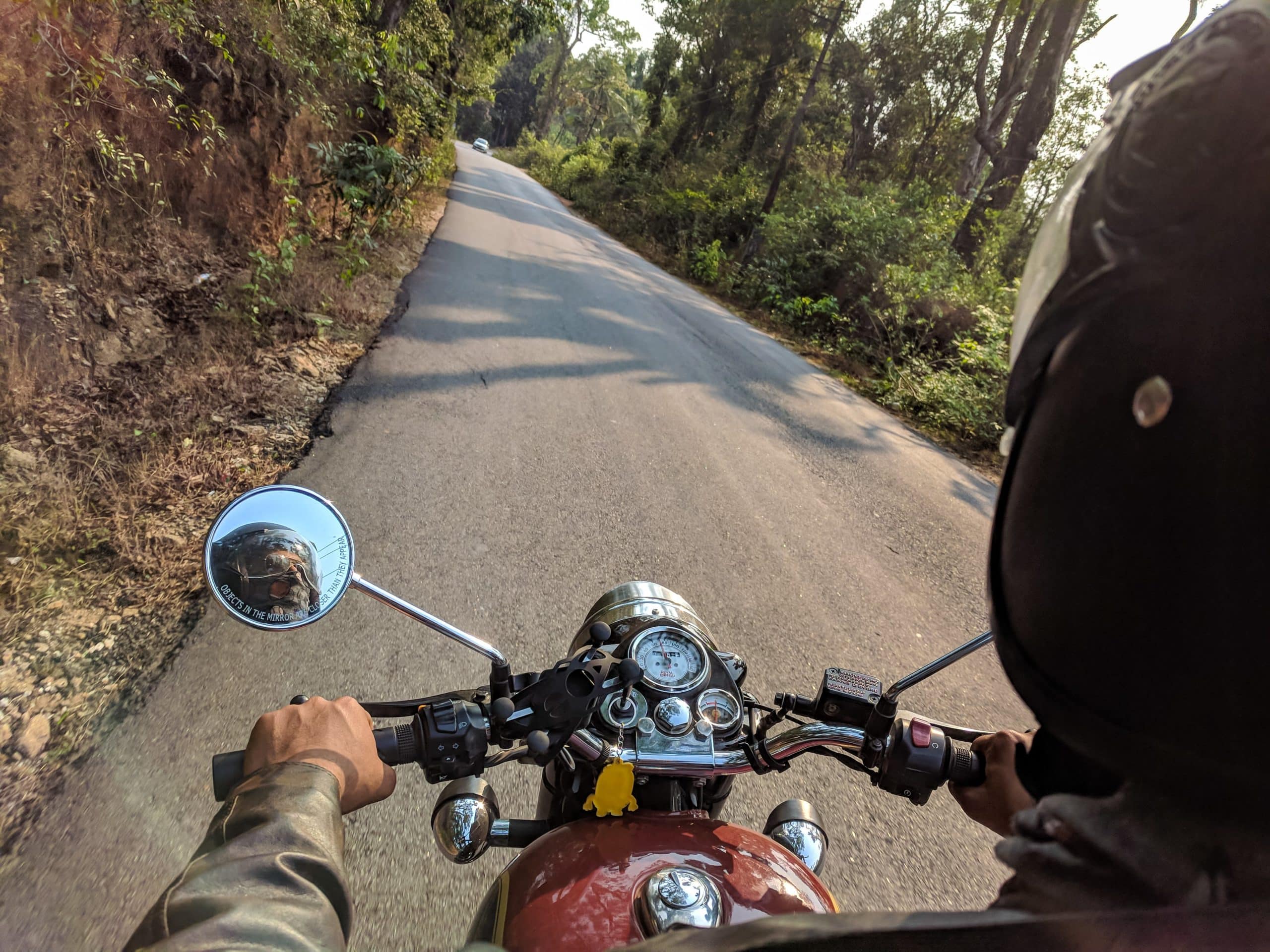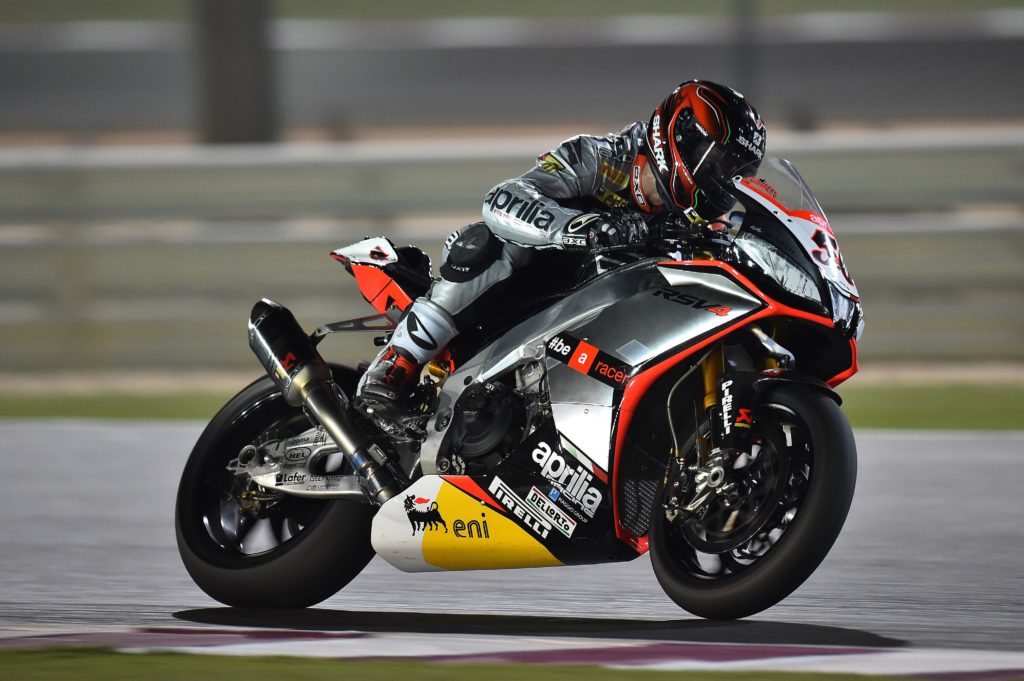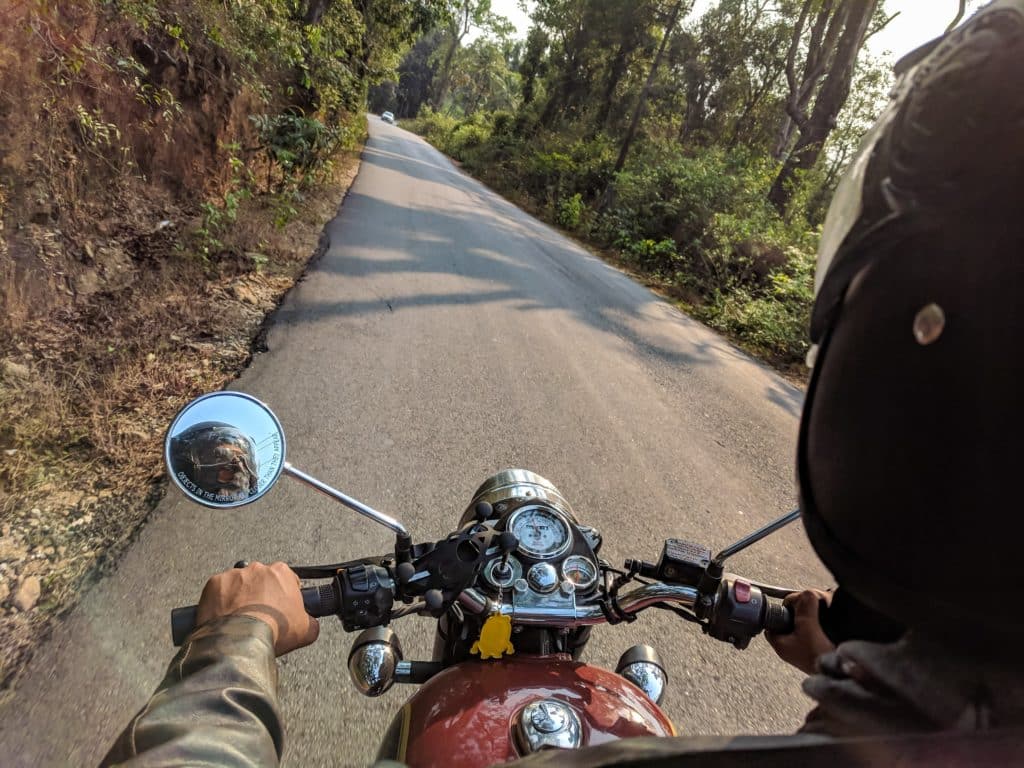Introduction
The thrill and freedom of riding a motorcycle
Riding a motorcycle is often associated with a sense of exhilaration, freedom, and adventure. Motorcycles symbolize the open road and a unique connection with nature. Many people are drawn to the thrill that comes with riding a motorcycle, as it provides a different experience compared to driving a car.
Understanding the importance of motorcycle safety
However, it is crucial to acknowledge and understand the importance of motorcycle safety. Motorcycles are inherently more dangerous than other vehicles due to their exposed nature and lack of standard safety features such as seatbelts and airbags. While some riders may engage in risky behavior, it is essential not to generalize and label all motorcycle riders as reckless.
To address common misconceptions about motorcycle safety, let’s examine some of the realities.
- Motorcycle riders are more at risk than car passengers:
According to the National Highway Traffic Safety Administration (NHTSA), motorcycle riders are indeed more vulnerable on the road compared to car passengers. In 2019 alone, there were 5,014 motorcycle fatalities in the United States. The lack of substantial protective barriers and safety features puts motorcycle riders at a higher risk in the event of a collision. - Larger motorcycles are more dangerous than smaller ones:
Contrary to popular belief, the size of a motorcycle does not determine its level of danger. While larger motorcycles may have more power, it is ultimately the rider’s behavior and adherence to safety guidelines that significantly impact the level of risk. It is vital for all riders, regardless of the size of their motorcycles, to prioritize safety and responsible riding. - The importance of proper gear and training:Wearing the appropriate safety gear, such as helmets, jackets, gloves, and boots, is essential for motorcycle riders. Additionally, undergoing proper training and obtaining a motorcycle license can significantly reduce the risk of accidents. Education and awareness about motorcycle safety are key in ensuring riders are equipped with the necessary skills and knowledge to navigate the roads safely.
In conclusion, while motorcycles offer a thrilling and liberating experience, it is crucial to prioritize safety and debunk misconceptions around motorcycle safety. Understanding the risks and taking appropriate precautions can help mitigate the dangers associated with riding motorcycles.
Myth: Larger motorcycles are inherently more dangerous than smaller ones
The reality behind motorcycle size and safety
Riding a motorcycle is often associated with a sense of exhilaration, freedom, and adventure. However, it is important to address common misconceptions surrounding motorcycle safety. One such misconception is that larger motorcycles are inherently more dangerous than smaller ones. The reality is that the size of a motorcycle does not solely determine its level of danger.
While larger motorcycles may be heavier and demand more from the rider in terms of handling, they also offer greater stability at high speeds. This means that they can be more controlled and predictable on the road. It is ultimately the rider’s behavior and adherence to safety guidelines that significantly impact the level of risk, regardless of the size of the motorcycle.
Factors to consider for motorcycle safety
When it comes to motorcycle safety, several factors come into play. Here are some important considerations:
- Rider behavior: Regardless of the size of the motorcycle, responsible riding is crucial for safety. This includes following traffic laws, avoiding risky maneuvers, and maintaining a defensive mindset while on the road.
- Proper gear: Wearing the appropriate safety gear is essential for motorcycle riders. This includes a DOT-approved helmet, protective jackets, gloves, and boots. These measures can significantly reduce the risk and severity of injuries in the event of an accident.
- Training and licensing: Undergoing proper motorcycle training and obtaining a valid motorcycle license are important steps in enhancing rider safety. Education and awareness about motorcycle safety help riders develop the necessary skills and knowledge to navigate the roads safely.
- Vehicle maintenance: Regular maintenance of the motorcycle, including checking tire pressure, brakes, lights, and other vital components, is crucial for ensuring optimal safety on the road.
In conclusion, while the size of a motorcycle may have certain implications on handling and stability, it does not inherently make larger motorcycles more dangerous than smaller ones. Rider behavior, proper gear, training, and vehicle maintenance all play vital roles in promoting motorcycle safety. It is important to debunk misconceptions and focus on evidence-based approaches to minimize risks and enjoy the thrill of riding responsibly.
Myth: Wearing a helmet reduces visibility and hearing making riding more dangerous
Debunking the misconception about helmets
Motorcycle helmets often face criticism for supposedly reducing visibility and inhibiting the rider’s ability to hear important sounds on the road. However, it is important to address this misconception and understand the realities of helmet use.
Modern helmets are designed with the rider’s safety in mind and take into consideration factors such as visibility and hearing. They are constructed with clear visors that provide a wide field of vision, ensuring that riders can see their surroundings clearly. Additionally, helmets are equipped with ventilation systems that allow for appropriate airflow, preventing fogging of the visor and enabling riders to maintain a clear line of sight.
Moreover, helmets are designed to allow for adequate hearing. While they provide protection from wind noise, which can be damaging to the ears, they are still designed to allow important sounds, such as sirens or honking, to be heard. The materials and construction of helmets are carefully engineered to strike a balance between protecting the rider’s ears and allowing them to remain aware of their surroundings.
The role of helmets in motorcycle safety
Wearing a helmet is a crucial aspect of motorcycle safety, and the benefits far outweigh any perceived drawbacks. Here are some reasons why helmets play a vital role in protecting riders:
- Head injury prevention: Helmets are specifically designed to absorb and distribute the impact force in the event of a crash, reducing the risk of serious head injuries. They provide a cushioning effect that can greatly minimize the trauma to the brain.
- Protection from debris and accidents: Helmets act as a barrier, shielding the rider’s head from flying debris, insects, or rocks that can cause significant harm. They also protect against abrasions and reduce the risk of facial injuries.
- Increased visibility: Many helmets come with reflective strips or vibrant colors, increasing the rider’s visibility to other motorists on the road. This can help prevent accidents by ensuring that the rider is easily seen, especially in low-light conditions.
- Legal requirement: In many jurisdictions, wearing a helmet is a legal requirement for motorcycle riders. Non-compliance can result in fines and penalties. By wearing a helmet, riders not only protect themselves but also adhere to the law and contribute to overall road safety.
In conclusion, the misconception that wearing a helmet reduces visibility and hearing is unfounded. Modern helmets are designed to provide adequate visibility and allow important sounds to be heard while still ensuring the rider’s safety. Helmets play a crucial role in protecting against head injuries, debris, and improving overall visibility on the road. It is essential for all motorcycle riders to prioritize their safety by wearing a helmet every time they ride.
Myth: Motorcycles are more dangerous than cars due to lack of protection
Comparing the safety features of motorcycles and cars
Motorcycles are often perceived as more dangerous than cars due to their lack of protection for riders. However, it is important to understand the differences in safety features between motorcycles and cars to have a more accurate assessment of the risks involved. Here is a comparison:
| Safety Feature | Motorcycles | Cars |
|---|---|---|
| Enclosed cabin | No | Yes |
| Seatbelts | No | Yes |
| Airbags | No | Yes |
As seen in the table above, motorcycles lack the enclosed cabin, seatbelts, and airbags that provide protection in cars. This makes riders more vulnerable to injury in the event of a collision.
Understanding the risks and precautions for motorcycle riders
While motorcycles may have fewer safety features compared to cars, it is important for riders to be aware of the risks involved and take necessary precautions. Here are some factors to consider:
- Reduced visibility: Motorcycles are smaller and less visible on the road, making it essential for riders to wear reflective gear and use proper headlights and taillights.
- Maintaining stability: Riders should be cautious of adverse weather conditions and road hazards, such as potholes and gravel, which can compromise a motorcycle’s stability. Slow down and use caution when encountering these hazards.
- Protective gear: While motorcycles may not provide enclosed protection like cars, riders can mitigate risks by wearing proper protective gear, including helmets, jackets, pants, and boots.
By understanding the risks and taking necessary precautions, motorcycle riders can minimize the potential dangers and make their riding experience safer. It is important for both riders and other motorists to be aware and respectful of each other on the road to prevent accidents and ensure overall road safety.
Myth: Motorcycles are more prone to accidents and fatalities
Examining the statistics and misconceptions surrounding motorcycle accidents
Contrary to popular belief, motorcycles are not inherently more dangerous than cars. While it is true that there may be fewer accidents involving motorcycles compared to other vehicles, it is essential to consider the higher rate of severe injuries and fatalities associated with motorcycle accidents.
According to the National Highway Traffic Safety Administration (NHTSA), motorcyclists are 24 times more likely to die in a crash and four times more likely to suffer injuries. These statistics emphasize the importance of debunking the misconceptions surrounding motorcycle safety and promoting responsible riding practices.
Promoting safe riding practices for motorcycle enthusiasts
To ensure the safety of motorcycle riders, it is crucial to dispel dangerous myths that can lead to harmful decisions on the road. Here are some key points to consider:
- Comparing the safety features of motorcycles and cars: It is important to understand the differences in safety features between motorcycles and cars to have a more accurate assessment of the risks involved. Motorcycles lack the enclosed cabin, seatbelts, and airbags that provide protection in cars, making riders more vulnerable to injury in the event of a collision.
- Understanding the risks and precautions for motorcycle riders: While motorcycles may have fewer safety features compared to cars, riders can mitigate risks by taking necessary precautions. This includes wearing reflective gear to enhance visibility, maintaining stability by being cautious of adverse weather conditions and road hazards, and wearing proper protective gear such as helmets, jackets, pants, and boots.
By understanding the risks and taking necessary precautions, motorcycle riders can minimize the potential dangers and promote a safer riding experience. It is important for both riders and other motorists to be aware and respectful of each other on the road to prevent accidents and ensure overall road safety.
Myth: Learning to ride a motorcycle is difficult and dangerous
Addressing the concerns about motorcycle training and learning process
Contrary to popular belief, learning to ride a motorcycle is not necessarily difficult or dangerous. While there may be some challenges involved, proper training and education can greatly minimize the risks and ensure a safer riding experience. It is important to dispel the misconceptions surrounding motorcycle training and emphasize the importance of acquiring the necessary skills and knowledge.
Importance of proper training and education for safer riding
- Professional guidance: Seeking professional guidance from certified motorcycle instructors can significantly enhance the learning process. These instructors are trained to teach the techniques and strategies required for safe riding.
- Safety courses: Participating in safety courses, such as the Motorcycle Safety Foundation (MSF) courses, can provide comprehensive training on essential riding skills, defensive riding techniques, and hazard awareness. These courses also emphasize the importance of wearing proper safety gear and following traffic laws.
- Skill development: By enrolling in training programs, riders can develop essential skills such as braking, cornering, and maneuvering, which are crucial for safe riding. These programs focus on building confidence and teaching the correct techniques to handle different road conditions and unexpected situations.
- Knowledge of road rules: Proper training ensures that riders are familiar with traffic rules and regulations, reducing the likelihood of accidents caused by ignorance or a lack of understanding.
- Awareness of risks: Motorcycle training also helps riders understand the risks associated with riding and how to mitigate them. This includes being mindful of blind spots, maintaining a safe following distance, and using defensive riding strategies to anticipate and avoid potential hazards.
- Continued learning: Learning to ride a motorcycle is an ongoing process. By regularly participating in advanced training courses or refresher courses, riders can continuously improve their skills and stay updated on new safety techniques.
It is imperative for aspiring motorcycle riders to recognize the importance of proper training and education. By gaining the necessary skills and knowledge, riders can ensure their own safety and contribute to overall road safety.
Myth: Motorcycle riders are reckless and irresponsible
Dispelling the stereotype of motorcycle riders
Contrary to popular belief, the myth that motorcycle riders are inherently reckless and irresponsible is unfounded. This misconception is often fueled by biased media portrayals and sensational news reports that focus on accidents or high-speed chases involving motorcycles. However, it is important to recognize that the majority of motorcycle riders are responsible individuals who prioritize safety while riding.
Promoting responsible riding and positive motorcycle culture
To combat this myth, it is essential to promote responsible riding and highlight the positive aspects of motorcycle culture. Motorcycle clubs and organizations play an integral role in promoting safety, educating riders, and advocating for their rights. They often organize charity events, community initiatives, and ride-outs that foster a sense of camaraderie and encourage responsible behavior on the roads.
By dispelling the misconception that all motorcycle riders are reckless, we can foster a better understanding and appreciation for the diverse community of riders. It is important to recognize that motorcyclists come from all walks of life, with various professions and backgrounds. They are not defined by stereotypes but rather by their passion for riding and their commitment to safety.
Education and training also play a crucial role in promoting responsible riding. By emphasizing the importance of proper training and education, riders can acquire the necessary skills and knowledge to ride safely. Safety courses, such as those offered by reputable organizations like the Motorcycle Safety Foundation (MSF), provide comprehensive training on essential riding skills, defensive riding techniques, and hazard awareness.
Furthermore, ongoing learning and skill development are essential for all motorcycle riders. By regularly participating in advanced training courses or refresher courses, riders can continuously improve their skills and stay updated on new safety techniques.
In conclusion, the myth that motorcycle riders are reckless and irresponsible is not supported by facts. The majority of riders prioritize safety and responsibility while enjoying their passion for riding. By promoting responsible riding, dispelling stereotypes, and emphasizing the importance of education and training, we can create a safer and more inclusive environment for all motorcycle enthusiasts.
Myth: Motorcycle gear and accessories are unnecessary and uncomfortable
Highlighting the importance of motorcycle gear for safety
Contrary to the myth that motorcycle gear is unnecessary, it is essential for rider safety. While wearing motorcycle safety gear may not completely eliminate the risk of accidents, it can significantly reduce the severity of injuries in the event of a crash. Investing in high-quality safety gear can make all the difference between a minor scrape and a life-altering injury. Motorcycle riders who prioritize safety understand the importance of wearing gear that provides protection for their head, body, hands, and feet.
Choosing the right gear for comfort and protection
Motorcycle gear not only enhances safety but also offers comfort and protection from the elements. Motorcycle jackets and pants are designed to keep riders warm in cold weather and protect them from the wind. Gloves and boots provide grip and protection, ensuring a secure hold on the handlebars and shielding the feet from the elements. Additionally, brightly colored safety gear improves visibility, making it easier for other motorists to see riders on the road.
When selecting motorcycle gear, riders should prioritize quality and fit. High-quality gear is often made from durable materials that can withstand impact and abrasion. It is important to choose gear that is certified by recognized safety standards, such as DOT (Department of Transportation) or ECE (Economic Commission for Europe), to ensure maximum protection.
Comfort is another important factor to consider when choosing motorcycle gear. Riders should opt for gear that allows freedom of movement and ensures proper ventilation to prevent discomfort during long rides. Additionally, gear that is adjustable and customizable can provide a better fit for individual preferences.
In conclusion, the myth that motorcycle gear and accessories are unnecessary and uncomfortable is not supported by facts. Motorcycle gear is crucial for rider safety, providing protection from potential injuries in the event of a crash. Additionally, gear enhances comfort and visibility, making the riding experience more enjoyable and safer. By choosing the right gear that is high-quality, certified, and comfortable, riders can prioritize their safety while indulging in their passion for riding.
Conclusion
The myth that motorcycle gear and accessories are unnecessary and uncomfortable is not supported by facts. Motorcycle gear is crucial for rider safety, providing protection from potential injuries in the event of a crash. Additionally, gear enhances comfort and visibility, making the riding experience more enjoyable and safer. By choosing the right gear that is high-quality, certified, and comfortable, riders can prioritize their safety while indulging in their passion for riding.
Reiterating the importance of motorcycle safety awareness
It is essential for riders to understand the importance of motorcycle safety and dispel common myths and misconceptions. By educating themselves about proper gear, handling techniques, and defensive riding, motorcyclists can significantly reduce the risk of accidents and injuries. Ongoing awareness campaigns and safety training programs can also play a crucial role in promoting safe riding habits and preventing motorcycle-related accidents.
Motivating individuals to prioritize safety while enjoying their motorcycle experience
The thrill and freedom of riding a motorcycle should not overshadow the importance of safety. Riders should always prioritize their well-being by wearing proper gear, following traffic laws, and continuously improving their riding skills. By doing so, individuals can ensure that they can enjoy their motorcycle experience to the fullest while minimizing the risks associated with riding.
In summary, debunking common myths and misconceptions surrounding motorcycle safety is crucial in promoting a safer riding environment. By understanding the realities behind these misconceptions and taking proactive measures to enhance safety, riders can enjoy their passion for motorcycles while minimizing the potential risks. Prioritizing safety should always be a top priority for all motorcycle enthusiasts.
Are Motorbikes Dangerous? Addressing Common Concerns and Misconceptions about Motorcycle Safety
Q: Are motorbikes more dangerous than cars?
A: While it is true that motorbikes have a higher risk of accidents compared to cars, it does not necessarily mean they are inherently more dangerous. The likelihood of accidents can be influenced by several factors such as rider skill, adherence to traffic rules, and environmental conditions.
Q: Do motorbikes have a higher rate of accidents?
A: Studies show that motorcyclists are more likely to be involved in accidents compared to car drivers. However, it is important to note that accidents can result from a combination of factors such as driver behavior, road conditions, and visibility, rather than solely being attributed to the vehicle itself.
Q: Are motorbikes less stable than cars?
A: Motorbikes require a different skill set and control compared to cars, but it does not mean they are less stable. Motorcycles are designed to be maneuverable and have a lower center of gravity, allowing riders to navigate through traffic and handle tight corners efficiently. However, it is important for riders to be aware of their limits and practice safe riding techniques.
Q: Do motorbikes lack safety features?
A: While motorbikes may not have the same level of safety features as cars, such as airbags or seat belts, they still incorporate various safety measures. These include anti-lock braking systems (ABS), traction control, and improved lighting systems. Additionally, riders can wear protective gear such as helmets, gloves, jackets, and boots to mitigate risks.
Q: Are motorcyclists more likely to sustain severe injuries in accidents?
A: It is true that motorcyclists are generally more vulnerable to injuries in accidents compared to car drivers. However, the severity of injuries depends on various factors such as the speed of the collision, use of protective gear, the presence of safety equipment on the motorcycle, and the rider’s skill. Taking safety precautions and wearing appropriate gear can greatly reduce the risk of severe injuries.
Q: Are motorbikes unsafe in adverse weather conditions?
A: Riding a motorbike in adverse weather conditions requires extra caution, as wet roads or strong winds can impair visibility and make the road surface more slippery. However, with proper training and adjustment of riding techniques, motorcyclists can learn how to manage these conditions and ride safely.
Q: Can motorbike accidents be avoided?
A: While accidents can never be completely avoided, there are steps that riders can take to reduce the risk. These include proper training and licensing, wearing appropriate safety gear, obeying traffic laws, staying alert and focused while riding, and actively seeking opportunities to improve riding skills.
Q: How can other road users contribute to motorbike safety?
A: Other road users can play a crucial role in motorcycle safety by being aware of motorbikes on the road. This means checking blind spots before changing lanes, giving motorcyclists proper space, not driving too close to a motorcycle, and using indicators to communicate intentions. Mutual respect and understanding between all road users can significantly enhance motorbike safety.

David Williams is an author with a passion for motorcycles and all things related to the world of two-wheeled vehicles. His expertise is evident on his website, The Moto Expert, where he shares his knowledge and insights with fellow enthusiasts. Follow him on social media to stay up-to-date on the latest motorcycle news, reviews, and trends. Whether you’re a seasoned rider or just starting out, David’s content is sure to inform and entertain. Join his community and become a part of the conversation today.





